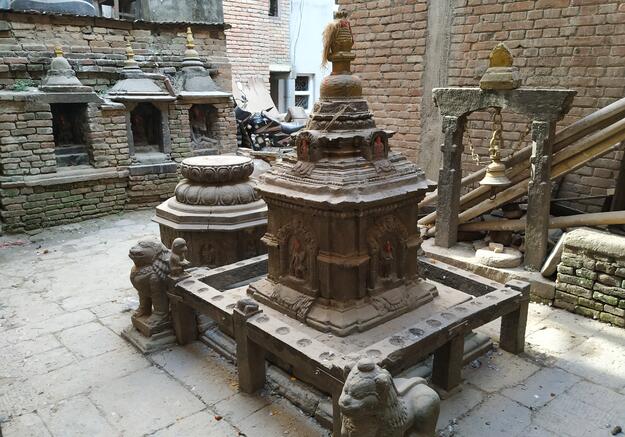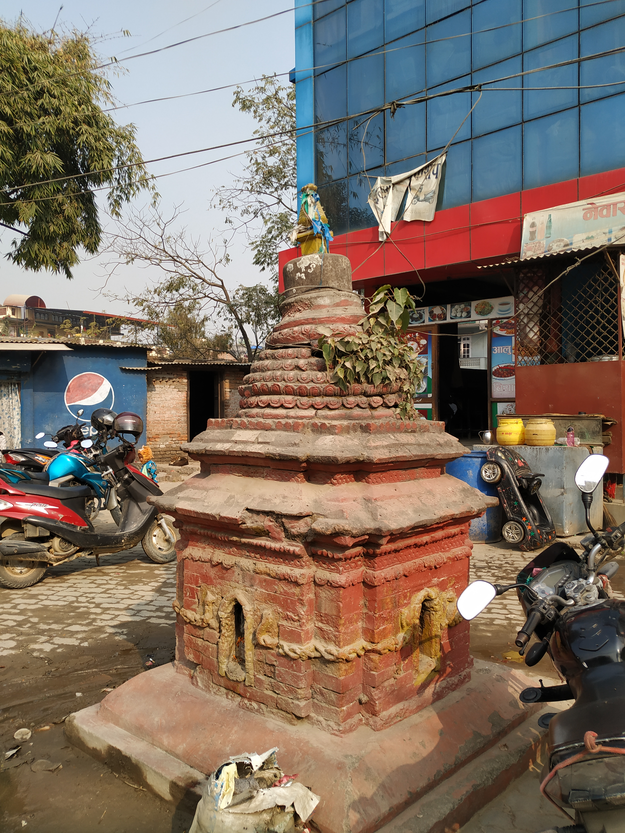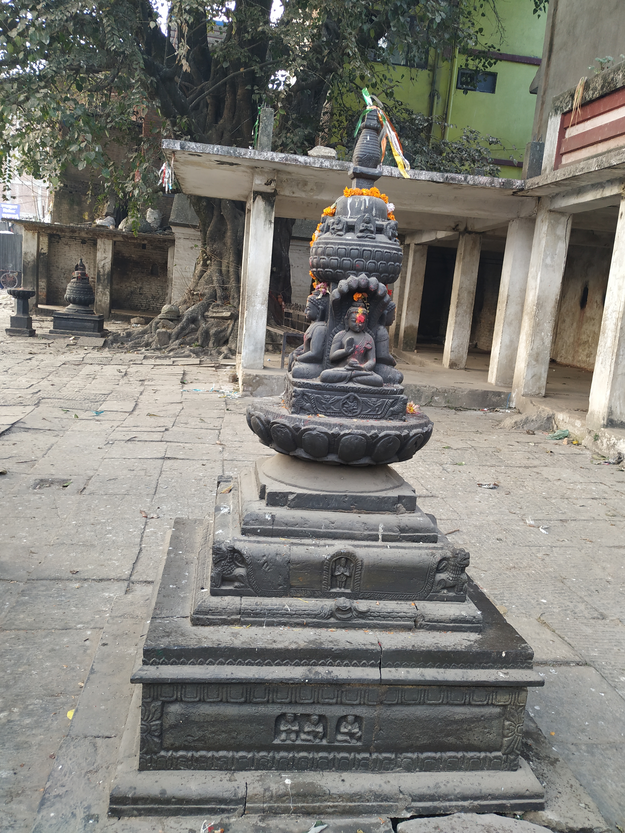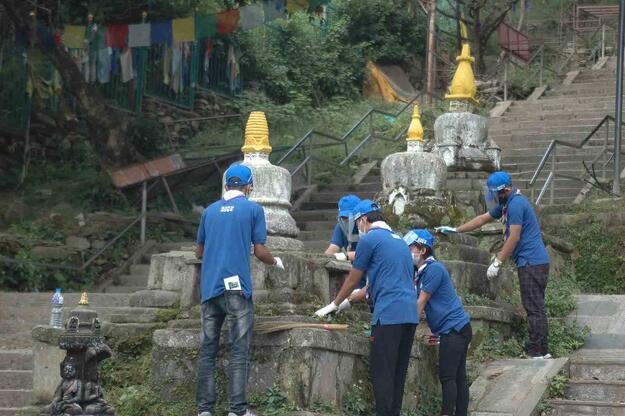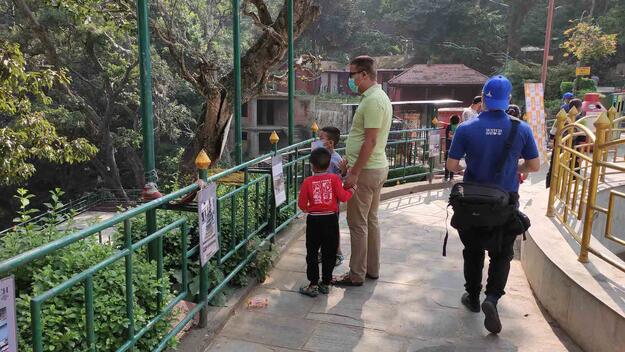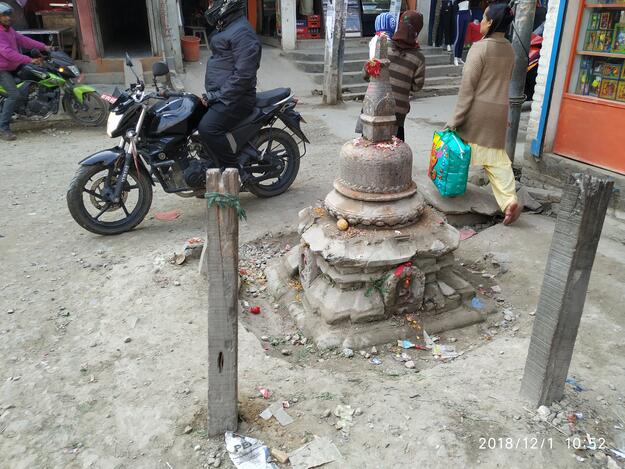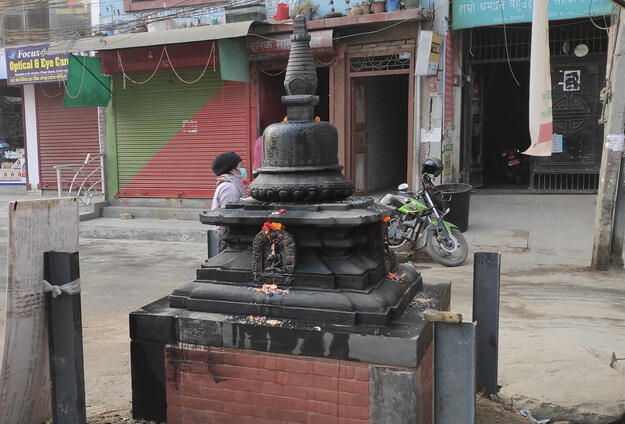Chivas and Chaityas of the Kathmandu Valley
Site History and Significance
A Constellation of Newari Sacred Sites
Nepal’s Kathmandu Valley is home to hundreds of sacred sites, and to a distinct and authentic form of Buddhism practiced by the Newar people. Lacking a monastic tradition, the Newars instead directed their worship to chivas and chaityas, or shrines, which abound in the urban landscape and the sacred topography of the valley. Chivas were and have continued to be erected in the memory of a deceased family member for the accumulation of merit by the deceased, by members of surviving generations, and by all sentient creatures. But instead of being limited to private devotion as funerary monuments, chivas instead became the focus of public worship for members of the community, as almost all of them are in public or semi-public spaces.
Chivas appear in a range of scales, from the monumental, like the mahachaitya, or “great chaitya,” of Swayambhunath down to sizes less than the height of a person. The oldest of them were erected in the Licchavi period, named after the ancient kingdom that ruled the Kathmandu Valley between the fifth and eighth centuries, while a revival of the construction of chivas took place in the seventeenth century. The typical votive chiva resembles a building in miniature, sitting on a plinth, adorned with carvings at different levels, and surmounted by a dome and prominent finial. Representing some of the best stone architecture in Nepal, the carved decoration depicts the saints and divinities of the Newari Buddhism pantheon, including the five versions of the Buddha and a profusion of Bodhisattvas. The shrines also contain carved inscriptions that address the sacred object directly and give information about the donor and the year of its creation. Some even contain admonitions not to destroy the shrine and warn of terrible consequences for those who do.
Our Involvement
2020 World Monuments Watch
But the chivas’ function as public monuments in the urban landscape places them in the middle of competing demands on public space. Historically rural, Nepal has been urbanizing rapidly over the last several decades, with the Kathmandu Valley at the heart of this trend. Unplanned urban development in the Kathmandu Valley has led to sprawl and the loss of open space, as well as encroachment or outright destruction of smaller chivas. In response, concerned citizens have mobilized to document the location, condition, and history of the chivas and compile a reliable database. Inclusion on the 2020 World Monuments Watch supports local efforts surrounding the preservation of this intangible heritage that can help maintain livability and quality of life for the residents of Kathmandu.
In early 2020, World Monuments Fund (WMF) partnered with the Chiva Chaitya Organization to support the restoration of 25 selected shrines. The project is intended to serve as a model for the future conservation of shrines in the region. In November 2022, the project received an Award of Merit at the 2022 UNESCO Asia-Pacific Awards for Cultural Heritage Conservation.
Watch Day
On October 3rd, 2020, a Watch Day featuring the Chivas and Chaityas of the Kathmandu Valley in Nepal was successfully held at Swayambhunath temple. The event welcomed more than 50 young people for site cleaning activities and expert-led tours of the shrines, all conducted under strict COVID-19 safety measures. Photographic displays featuring the history of the shrines helped raise awareness of the challenges to their preservation, while interactive activities invited children and adults alike to reflect on the significance of the chivas and their preservation.
Learn More
World Monuments Fund safeguards cultural heritage around the globe, ensuring our treasured places are preserved for present and future generations.
Sign up for our newsletter to receive regular updates on our projects, stories from the field, upcoming events, and more!
![]()

